In this article with Impeccable Nest, we will delve deeper into the world of traditional style in interior design, exploring its key features, historical significance, and contemporary applications. Traditional style is a style that has been around for a long time. We will investigate the many facets of this cherished design style, beginning with the intricate details of traditional upholstery and progressing to the timeless appeal of classic architectural elements. This article will provide a comprehensive overview of traditional style in interior design. Whether you are an experienced design professional or simply looking to infuse your space with a touch of timeless elegance, you will find the information in this article useful.
It is absolutely necessary for you to have a solid understanding of what is meant by the term “traditional style,” especially if you have any interest in the “traditional style.” When people in the past referred to “traditional style,” they meant an interior design that featured well-coordinated furnishings from the same era, vivid colors, a variety of patterns, and multiple layers of window treatments and accessories. In spite of this, our conception of what constitutes traditional style has shifted as a result of the influences of contemporary life. Many people want to avoid the fuss that is typically associated with traditional style, but at the same time, they are interested in designs that are timeless and classic.
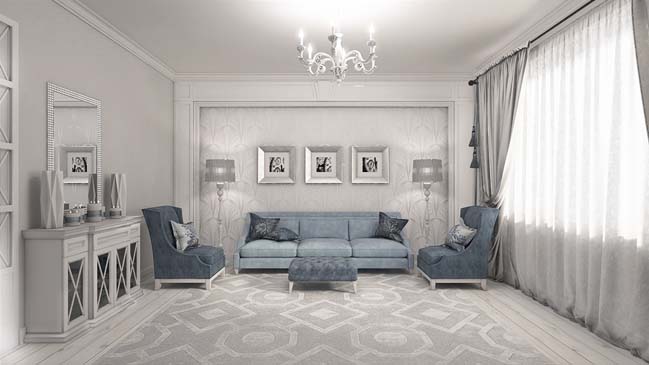
What is traditional style interior design?
Traditional style interior design is more than just a trend, it is an enduring and beloved aesthetic that has been cherished for decades. It takes its cues from a diverse range of historical sources in order to create a timeless aesthetic that incorporates time-honored design elements that have endured the test of time. Rich colors, intricate patterns, and ornate detailing lend an air of sophistication and class to any room you decorate in traditional style. The attention to detail and craftsmanship in traditional style are unmatched by any other design aesthetic. Everyone can find something they like in traditional style, whether it’s the graceful curves of Queen Anne furniture or the intricate motifs of Persian rugs. The traditional style has something to offer everyone. You can create a classic and elegant interior that will stand the test of time if you use traditional design elements in your project. Why not appreciate the elegance of traditional design and discover how it can turn your home into a work of art?
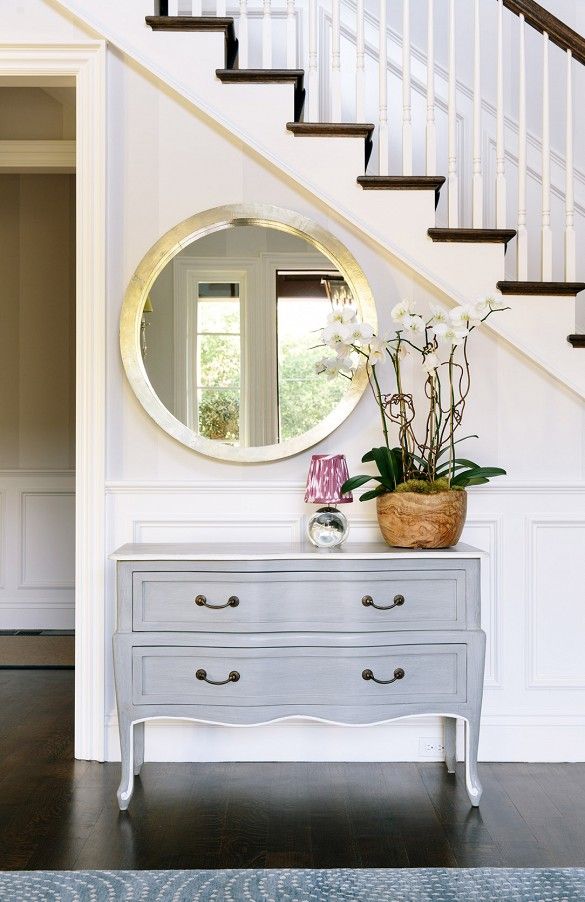
What are the principles of traditional interior design?
-
Focus on Symmetry
Traditional interior design relies heavily on symmetry to achieve a sense of balance and harmony within a space. The goal is to create a visually appealing, organized, and elegant environment. The application of symmetry entails positioning identical or similar objects on either side of a central axis. Asymmetrical sconces, for example, could be hung on either side of a fireplace, or two identical armchairs in a living room could be positioned facing each other.
Traditional interior design values order and elegance, which can be achieved through the use of various design elements that prioritize symmetry, balance, visual anchors, and focal points. These elements aid in establishing hierarchy and directing attention to specific areas of the space. To achieve symmetry, begin with a well-defined color palette and a clear plan. To create symmetrical arrangements, furniture, artwork, and other decorative items can be used, but scale and proportion must be carefully considered to ensure that each component fits seamlessly with the overall design.
Interior designers can create a timeless traditional space that is both welcoming and functional by utilizing balance, symmetry, and focal points. This type of setting is ideal for daily activities and is sure to impress visitors with its orderliness and elegance.
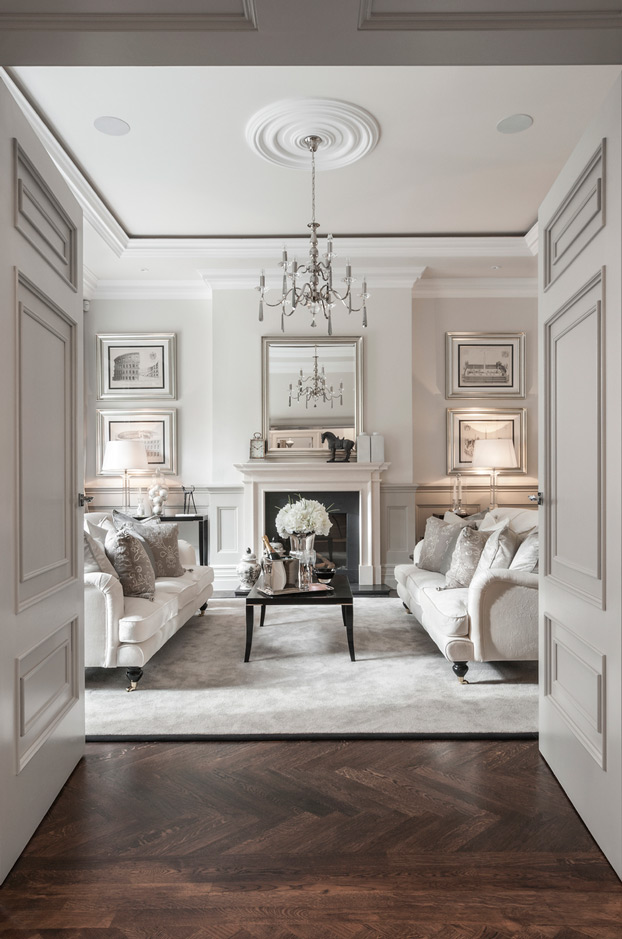
-
Use Rich Colors and Textures
When it comes to interior design in a traditional style, color and texture are essential components that should be used. This style of interior design frequently makes use of rich, warm colors such as burgundy, navy, and forest green, in addition to opulent materials such as silk, velvet, and brocade. Consider incorporating these components into your design plan in order to give your house the appearance of being more traditional. In a dining room that is used for formal occasions, you might, for instance, hang luxurious silk drapes or a sofa upholstered in velvet in a deep jewel tone.

When it comes to developing a cohesive and harmonious traditional atmosphere, selecting the appropriate color palette can make all the difference. In order to generate an environment that is cozy and inviting, traditional color schemes typically make use of colors that are muted and coordinated. Ivory, taupe, and beige are examples of neutral tones that are frequently used as a base because they provide a blank canvas on which more vibrant colors and patterns can be displayed. It was decided to use burgundy, navy blue, and forest green as accent colors in order to give the room a sense of depth and richness. It is essential to find a balance between light and dark, warm and cool colors, when using color in a traditional interior design scheme. This can be accomplished through the use of colors that are complementary to one another, through the layering of different shades and tones, or through the utilization of color as a focal point through the use of striking artwork or a vibrantly colored rug. No matter what strategy is used, the objective is to design a color palette that is both aesthetically pleasing and inviting. This will serve as a complement to the general feeling of coziness and warmth that is present in the traditional setting.
-
Emphasize Detail and Ornamentation
The utilization of intricate details and decorative flourishes is one of the defining characteristics of traditional interior design. This design aesthetic is characterized by the frequent use of intricate moldings, carved woodwork, and ornate hardware, all of which contribute to a sense of refined elegance. You should think about incorporating these decorative elements into your design scheme if you want your home to have an appearance that is more traditional. For instance, you could install wainscoting in a room or replace the standard light fixtures in the room with chandeliers.
Traditional interior design places a significant emphasis on the use of patterns, specifically ornate motifs and intricate designs, which add a sense of depth and interest to the area. Patterns can be found in a wide variety of products, including flooring, wall coverings, textiles, and decorative accessories. It is essential to take into consideration the scale as well as the repetition of the design when incorporating patterns into a traditional setting. Both large and small patterns have the potential to give the impression that the space is cluttered and disorganized. The challenge lies in striking a healthy equilibrium between scale and repetition in order to generate a sense of visual interest without completely dominating the area. The use of patterns in an artful manner, such as in throw pillows or curtain panels, can also be an effective method for generating a point of focus and incorporating interest into a room. When choosing patterns for a room, it is essential to take into account the room’s overall color scheme and design style. This will allow you to choose a pattern that either complements or clashes with the other elements of design in the room. The use of intricate patterns in a considered and purposeful manner enables interior designers to give a classic setting a sense of depth and richness, thereby producing an ambiance that is both classic and elegant.
-
Incorporate Antique or Vintage Pieces
When it comes to traditional interior design, the incorporation of antique or vintage pieces can prove to be an excellent choice because they lend a sense of history and personality to the space. It doesn’t matter if it’s an antique chest of drawers, a set of candlesticks from another era, or a vintage chandelier; each of these things has the potential to lend the design scheme its own special allure and personality. Estate sales, flea markets, and antique shops are common places where one might be able to purchase such items.
In addition, one of the defining characteristics of interior design in a traditional style is the prevalence of natural materials. Wood and metal in particular are favored for the purpose of generating an environment that is cozy and welcoming. Finishes on wood can range from light and natural to dark and rich, making it a popular material for use in the construction of furniture, flooring, and decorative elements. Oak, cherry, and mahogany are the three most common woods used in the construction of traditional furniture. On the other hand, pine and maple are the most common woods used for flooring and cabinetry.
In a similar vein, traditional design relies heavily on the use of metal, which contributes both practical and aesthetic elements to the finished product. Popular materials like brass, bronze, and wrought iron can be used to make accents such as hardware, lighting, and other decorative elements. It is imperative that careful consideration be given to the room’s overarching color scheme and design aesthetic before making any material selections or additions for a traditional setting. It is essential that the finishes of the different types of wood and metal complement one another and blend inconspicuously with other materials such as textiles and stone. Adding visual appeal to the room and giving it a sense of depth and interest can be accomplished by combining a variety of different finishes and textures.
By deftly blending the deep tones of wood and metal, interior designers can create a space that is classic and elegant, as well as one that is both practical and aesthetically pleasing.
Traditional Design Today
Traditional style has been around for centuries, but it still has a place in contemporary interior design, even though it’s not as popular as it once was. Many designers working in the fashion industry today are experimenting with contemporary takes on classic looks by fusing traditional components with a more modern aesthetic. This method presents a novel and contemporary interpretation of classic design while paying homage to the aesthetic value and historical import of the traditional style. There are many contemporary homes that feature traditional design elements, such as the elegant furnishings of a traditional townhouse or the cozy and inviting atmosphere of a country estate. Traditional design elements can also be found in many contemporary homes. Designers are able to create a one-of-a-kind and personalized look for their clients that is reflective of their preferences and lifestyles when they combine traditional elements in contemporary settings. It is essential, however, to strike a balance between traditional and contemporary design elements in order to avoid giving the impression that the space is overly dated or overly trendy. The objective should be to produce an interior that is consistent and harmonious, combining the most desirable aspects of both eras. This will result in a room that is not only timeless but also relevant to the design landscape of today.
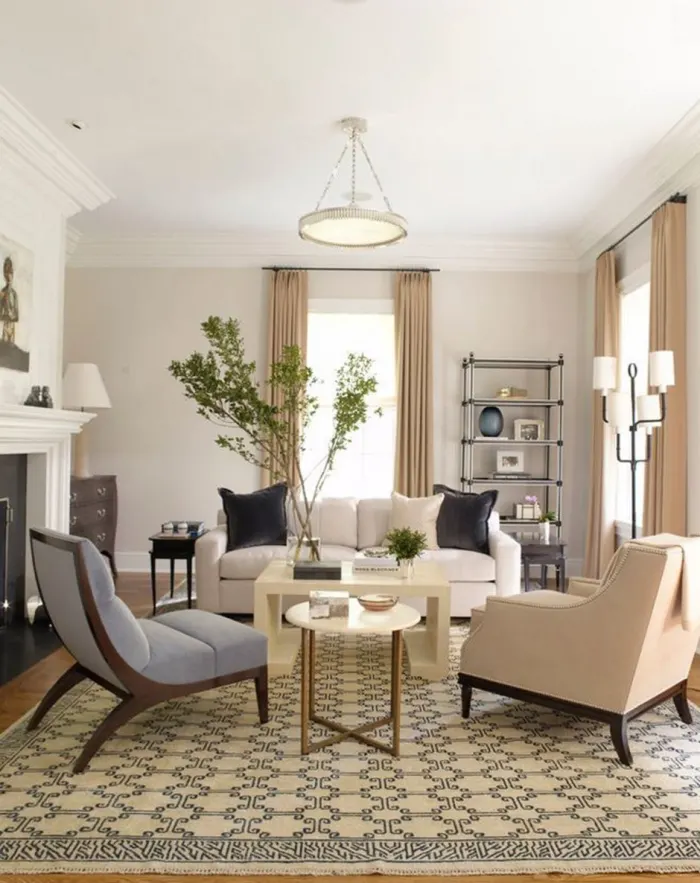
Traditional Interior Design Decorating Tips
The new traditional style gives preference to formal furniture that has been modernized to place a greater emphasis on comfort and has an appearance that is more streamlined. Mixing and matching different finishes and time periods is encouraged, which results in an environment that is more personalized and features traditional seating plans on a larger scale that are friendly to families. To bring an older space into the modern era, you might want to take into consideration putting any or all of the following suggestions into action:
Rethink Art
If you want to inject some of your unique personality into your living space, why not think about decorating it in a way that isn’t as traditional as others do? If you want to make a statement, rather than settling for a single piece of artwork to do the job, consider grouping together several smaller pieces of art or even going for one work that is on a larger scale. This is an alternative to settling for a single piece of artwork to do the job. In addition, you shouldn’t limit yourself to conventional works of art that have been framed; there are a lot of other interesting options available that you should look into. You could repurpose some old signage, set up a display of some vintage board games, or highlight some other interesting found objects as the central focus of your artistic creation. If you put in a little bit of creative effort and use your imagination, your home has the potential to turn into a personal gallery.
Reduce Clutter
If you like traditional style but want to modernize your interior decoration at the same time, the new traditional look might be exactly what you’re looking for if you’re trying to decide between the two. Elegance with a low profile is the defining characteristic of this look. Instead of filling your space with a lot of little things to make it look cluttered, choose to decorate it with a few large statement pieces or thoughtfully curated groupings instead of filling it with a lot of little things to make it look cluttered. The new traditional style does not shy away from the incorporation of bright colors and intricate patterns, which gives a contemporary spin to an otherwise timelessly elegant aesthetic. When designing a room, giving priority to quality over quantity will result in a space that exudes an air that is both traditional and contemporary at the same time.
Update Lampshades
Are you sick and tired of the conventional pleated shades that give your room the appearance of clutter and antiquated technology? If so, then you should consider replacing them. A more streamlined appearance can be achieved by switching to simple drum shades, and the time has come to make the change. These shades are not only functional, but they also have a modern look and feel to them in terms of both their style and their appearance. Because of their straightforward, unobtrusive appearance that is characterized by clean lines, drum shades are able to effortlessly complement any interior design style. Your room will exude an air of refined elegance if you use these tones in it, regardless of whether the aesthetic you’re going for is more traditional or more contemporary. Because there is such a large selection of fabrics and hues from which to choose, you won’t have any trouble finding the ideal drum shade to complement the color scheme that is already present in your room. Get rid of those old-fashioned shades that are bringing the look of your design down and make the switch to drum shades right away. Drum shades will give your design an updated and uncluttered appearance.
Break Up Matching Furniture Sets
When it comes to interior design, less is typically more in terms of decorating a room. This is especially true when it comes to minimalist design. The atmosphere of a room can become overly stuffy and formal if it contains an excessive number of pieces of furniture that are identical to one another. Instead, you should consider experimenting with combining pieces of furniture that have different eras and finishes in order to achieve a look that is both more eclectic and more long-lasting. However, in order to avoid giving the impression that the design was hastily thrown together, you should make sure to keep the cohesion and consistency of the color palette intact. Keep the number of colors in your palette to a minimum and use those few colors in a variety of ways throughout the room, such as on decorative pillows, in the fabric of the curtains, and in accent pieces. As a result, this will help tie everything together, which will contribute to the creation of an environment that is peaceful.
Complex Patterns
The use of intricate patterns is one of the defining characteristics of interior design in the traditional style. Ornate motifs and detailed designs give the room a sense of depth and add to its overall appeal. Patterns can be found in a wide variety of products, including flooring, wall coverings, textiles, and decorative accessories. It is essential to take into consideration the scale as well as the repetition of the design when incorporating patterns into a traditional setting. Both large and small patterns have the potential to give the impression that the space is cluttered and disorganized. The challenge lies in striking a healthy equilibrium between scale and repetition in order to generate a sense of visual interest without completely dominating the area. The use of patterns in an artful manner, such as in throw pillows or curtain panels, can also be an effective method for generating a point of focus and incorporating interest into a room. When choosing patterns for a room, it is essential to take into account the room’s overall color scheme and design style. This will allow you to choose a pattern that either complements or clashes with the other elements of design in the room. The use of intricate patterns in a considered and purposeful manner enables interior designers to give a classic setting a sense of depth and richness, thereby producing an ambiance that is both classic and elegant.
Detailed Millwork
The traditional style of interior design is easily recognizable by its intricate millwork, which gives the room more depth and personality. The decorative trim and molding that is used to embellish walls, ceilings, and other architectural elements are collectively referred to as millwork. Traditional interior design frequently makes use of millwork in the form of crown molding, wainscoting, and paneling, among other common types. These components can be utilized to generate a sense of symmetry and balance within the area, in addition to enhancing the area’s aesthetic appeal and tactile experience. It is essential to take into consideration the size of the space as well as the design style before incorporating any millwork into a traditional setting. Millwork that is intricately detailed and ornate can be overpowering in a room that is on the smaller side, whereas simple lines in a room that is on the larger side may look out of place. Another strategy that can be used to generate a focal point and add interest to the space is to make strategic use of millwork, such as in the construction of a feature wall or around a fireplace. When choosing millwork, it is also important to consider the overall color scheme and style of the room. This is done to ensure that the millwork complements the other design elements rather than clashing with them. A traditional room can be given more depth and personality by designers by having them incorporate detailed millwork in a way that is both thoughtful and intentional. This results in an atmosphere that is both classic and elegant.
You can give your home an updated take on the classic, traditional look by using these pointers in conjunction with the advice found in Impeccable Nest.
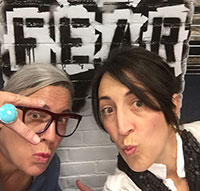
We’re Emma Carole Paradis and Kimberly Carole, the owners and designers of Impeccable Nest, based in Bedford, New Hampshire. A mother-daughter team with a love of design. Originally from Manhattan Beach, California, now based in Bedford, New Hampshire, we bring a Southern California cool and New England tradition to our design. Not only do we work together…we also live together in a multi-generational home…and a home that they are known to design for others.
